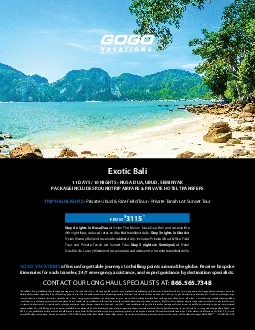PPT-Baggage label,
Author : test | Published Date : 2015-11-25
Luftschiff Graf Zeppelin ca 1930 Illustrated by Ottomar Anton 18951976 German Printed by JC König amp Ebhardt Hannover Germany The Wolfsonian FIU The Mitchell
Presentation Embed Code
Download Presentation
Download Presentation The PPT/PDF document "Baggage label," is the property of its rightful owner. Permission is granted to download and print the materials on this website for personal, non-commercial use only, and to display it on your personal computer provided you do not modify the materials and that you retain all copyright notices contained in the materials. By downloading content from our website, you accept the terms of this agreement.
Baggage label,: Transcript
Download Rules Of Document
"Baggage label,"The content belongs to its owner. You may download and print it for personal use, without modification, and keep all copyright notices. By downloading, you agree to these terms.
Related Documents














